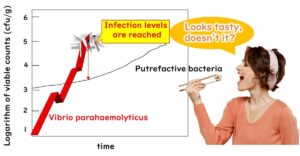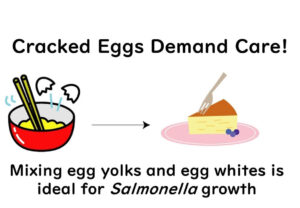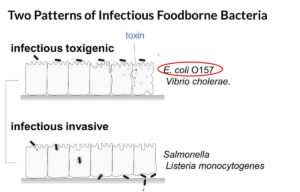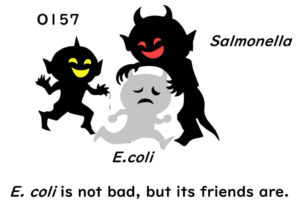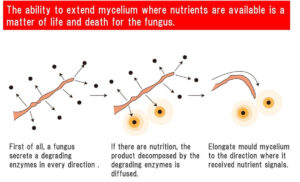Basic Course
Uncovering the Secrets of Clostridium botulinum: From Soil to Deadly Toxin in Our Food Supply
Clostridium botulinum, the bacterium responsible for botulinum toxin, is a fascinating yet alarming subject in the field of food microbiology. Known for producing the most potent biological toxin, this microorganism has raised critical questions for scientists and food safety experts alike. Why does this bacterium produce such a dangerous toxin? How does it survive in everyday foods? This blog dives into the complex nature of Clostridium botulinum, exploring its survival mechanisms, the types of food at risk, and the distinct characteristics between its toxin-producing types. Join us as we unravel the mystery behind this bacterium and its impact on food safety, offering essential insights for professionals and students in microbiology.
Understanding Bacillus cereus: Food Safety Risks and Prevention Strategies
Dive into the hidden world of Bacillus cereus, the unseen but ever-present bacteria lurking in our meals. Discover how it claims its territory, from the unsuspecting corners of your kitchen to the very plate you eat from. Grasp the distinct patterns of food poisoning it orchestrates — some leave you queasy with vomiting, others with relentless diarrhoea. And, uncover the crucial kitchen hack of quick cooling to stop this microscopic menace in its tracks. Are you ready to outsmart the bacteria that loves to spoil more than just your food
The Hidden Dangers of Vibrio parahaemolyticus: Understanding a Marine Bacterium and Food Safety Measures
Exploring the depths of marine life isn’t just about discovering sea creatures; it’s also about understanding the microorganisms that influence our health. Vibrio parahaemolyticus might sound like a complex term, but learning about this marine bacterium is essential. From causing food poisoning to its unique ability to adapt to conditions outside its ocean habitat, Vibrio parahaemolyticus is a marine microbe with terrestrial implications. Discover how Japan’s proactive measures have helped control this bacterium domestically while cases continue to rise globally. Dive into this fascinating exploration of Vibrio parahaemolyticus, where the marine world meets food safety.
Understanding Campylobacter: Food Poisoning Risks and Prevention Tips
Ever had a dodgy chicken sandwich that left your stomach in knots? Or heard of someone feeling numbness after a bout of food poisoning? It might have been down to a little mischief-maker called Campylobacter. In this post, we'll dive into what this bacterium is all about, why it loves to hide in chicken, and some of its peculiar habits like thriving in warm environments and being a bit shy around oxygen. Plus, we'll discuss a mysterious condition called Guillain-Barré Syndrome that might follow this food poisoning – a syndrome where your body's own defense system goes a bit rogue. And, of course, we'll give you some top tips to keep these unwanted dinner guests away from your plate. Ready to become a food safety expert? Let's dive in!
Comprehensive Guide to Salmonella: Understanding Types, Risks, and Food Safety Measures
Salmonella is a bacterium known for causing food poisoning worldwide, but it also has more severe strains that can lead to life-threatening infections. In this article, we explore Salmonella's characteristics, from its habitats and survival traits to its types—those responsible for food poisoning and those that spread through person-to-person transmission. We'll also cover critical aspects of Salmonella's serotype notation, contamination in raw chicken, the latest global regulations, risks associated with eggs, and its unique resilience to drying. Whether you're a food industry professional or a curious reader, this guide provides valuable insights into preventing and managing Salmonella-related risks.
Uncovering Shiga-toxin-producing Escherichia coli (STEC): Infection Mechanisms, Risky Foods, and Long-term Effects
Hello Everyone! I hope you're all well and ready to explore the intriguing world of foodborne pathogens. Over the course of the next 10 lectures, we’ll be delving into individual, representative foodborne bacteria to understand them better. Kicking off our series, we will begin with the Enterohaemorrhagic E. coli, a type of bacteria that can cause serious illness. We'll be discussing its symptoms, incubation period, causes, and routes of transmission, aiming to present the information in a manner that’s easy to comprehend without the need to memorise every detail individually.
Lactic Acid Bacteria: More Than Just Beneficial Bugs in Foods
In the food industry, we all know and love the 'good bacteria' like the ones that make our yogurt and fermented foods. However, there's another side to the story. Some lactic acid bacteria can cause our food to spoil. Today, I'll be delving into these not-so-friendly lactic acid bacteria that pose problems in our food. What is Lactic Acid Bacteria? For those unfamiliar, I won't go into too much depth today, but there's another article that gives an easy-to-understand breakdown of what this bacteria is and its characteristics.How Do We Distinguish Lactic Acid Bacteria from Other Gram-Positive Bacteria Using the Catalase Test? Why focus on Lactic Acid Bacteria? As we've […]
Understanding E. coli and Coliform Bacteria: Key Differences, Roles, and Their Significance in Food Safety
In this article, we take a closer look at E. coli and the coliform bacteria family, two key players in food microbiology. What exactly are these microorganisms, and how do they differ? Where are they commonly found, and could they impact food safety? We’ll explore their presence in various environments, their roles as indicators in food hygiene, and why different countries regulate them differently. Let’s dive in to understand the unique characteristics of these bacteria and their significance in maintaining food safety standards worldwide.
Yeast and Mold: Evolutionary Stagnation and Significance in Food Microbiology
In this article, I would like to talk to you about yeast and mold, two important microorganisms in food microbiology that are distinct from bacteria. While they are more complex than prokaryotic bacteria, both yeast and mold have reached an evolutionary dead end. Despite being heterotrophic, they have formed cell walls similar to those of plants, which hindered their development into more animal-like organisms. In this presentation, I will also discuss the positioning and significance of yeast and mold in the context of food microbiology.
Can Salmonella and E. coli O157 Spread in Toilets or Through Conversation? Understanding Foodborne Bacteria Transmission
Welcome! In this article, we delve into some essential questions about foodborne bacteria, specifically Salmonella and E. coli O157. Can these bacteria be transmitted in everyday places like toilets, or even during conversations at the dining table? While these bacteria are primarily known for causing infections through contaminated food, understanding their true transmission routes is crucial for food safety. Join us as we explore how foodborne pathogens behave and why they generally infect us only through food, shedding light on food microbiology and safe eating practices.


